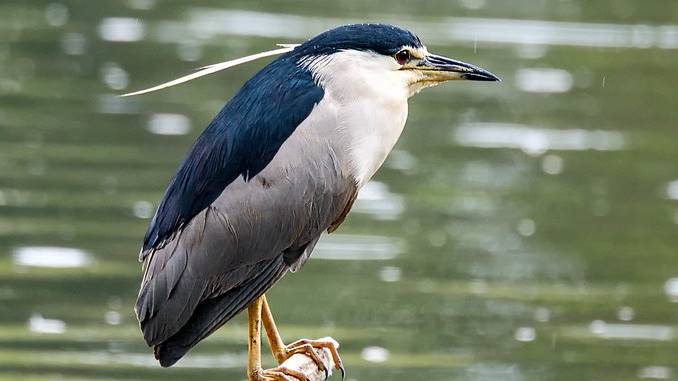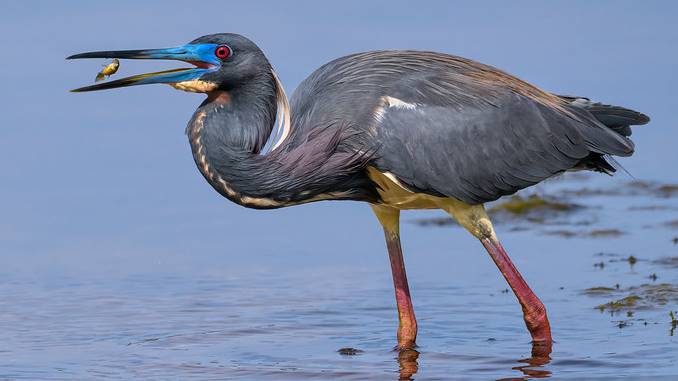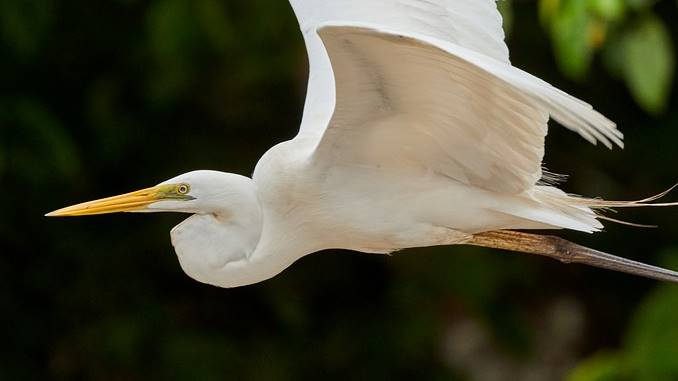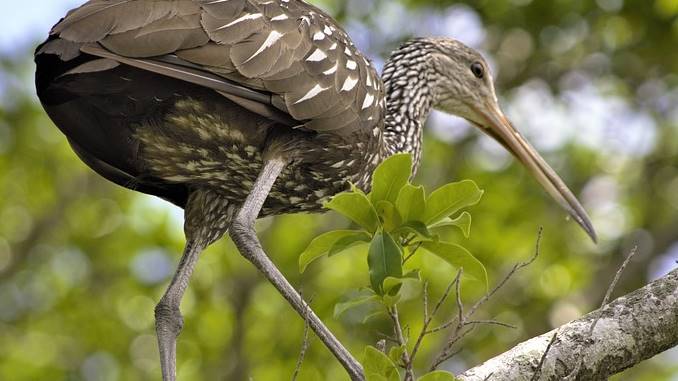Disclaimer: The information presented below is for general informational & educational purposes only. Always consult with animal professionals in case of specific concerns.
Birds are famous for their feathers and wings.
However, some species, like egrets or herons, earn recognition thanks to their long, slender legs.
Birds with long legs look elegant, right? But do you know that this beautiful trait can serve other purposes?
We will reveal some fun facts about these long-legged birds in this post.
For a comprehensive understanding, let’s follow our post!
16 Birds With Long Legs
There are many long-legged birds that you may see in nature. We will only mention the most common species right here but discuss their features in detail.
Ostrich
Ostrich is a long-legged bird that can grow up to 8 feet tall and weigh as much as 350 pounds.
It lives in Africa, where it spends most of its time on the ground and eats plants, seeds, fruit, insects, and occasionally small animals.
Its legs can be more than 3 feet long, and its neck is nearly as long. The ostrich has two toes on each foot, which helps it run fast. It can also kick hard with its powerful legs.
The ostrich is the largest living bird in the world.
The males are usually much larger than the females. Male ostriches can be more than twice the size of females.
Black-Crowned Nocturnal Heron
The Night Heron’s legs are shorter than those of the other herons but still longer than those of other species.
The neck of this species is thick, and they have a short head on it. You may only easily notice their flay, yellow eyes, and long beak.
These species live in lakes, reservoirs, streams, and marshes. Their body is light gray, and their head has a black crown.
Night Herons are nocturnal because they like to hide among the bushes during the day and hunt in the evenings or at night.

Yellow-Crowned Nocturnal Heron
Aside from Night Herons with black crowns, there are also Night Herons with yellow crowns. Other herons have elegance, but this species has not.
Their bodies have a silky purple-gray tint with long, golden plumes at the rear of the head, giving them an elegant vibe.
These herons mostly live in coastal locations since their diet mainly relies on crustaceans. In several places, people call these herons “crab-eaters.”
The yellow-crowned herons like to live alone and are far more secretive than their black-crowned relatives.
Great Blue Heron
The Great Blue Herons are the biggest heron subspecies found in North America. These herons are well-known for their superb fishing abilities.
The herons catch fish by staying still in a lake for hours, waiting patiently for the fish to approach within range of their necks.
They swiftly move their necks and eat fish using their razor-sharp bills as soon as they get near enough.
The Great Blue Herons eat a variety of foods, including insects and mice.
Although these birds are solitary hunters, they live in huge colonies and are quite friendly.

Green Heron
Green Herons are small heron species that live alone in dense vegetation or small bodies of fresh water.
The herons make a unique “kyow” noise every time they fly, which many bird-watchers use as a sign.
From a distance, their highly colored wings look dark and dull. On closer observation, you’ll notice that their rear wings have some green tints, while their lower parts are chestnut brown.
Because of their tiny bodies, they don’t swim as much as the other herons. Their standing-still technique, on the other hand, is spot-on.
Little Blue Heron
Despite their name, these species are more related to Egrets than Herons.
It’s also evident to consider their scientific name, which starts with the word “Egretta.”
When the birds hatch from the eggs, they look like Snowy Egrets in appearance. On the other hand, their plumage blackens to a slate-blue tint as they mature.
They go over lush meadows and wade into small ponds. Their primary diets are fish. However, they can also eat lizards, turtles, spiders, snakes, tadpoles, etc.
Little Blue Herons are friendly birds that commonly live in colonies with other heron species.
Tricolored Heron
One of the most attractive heron subspecies in North America is the Tricolored Heron.
Almost their whole body is a deep slate-blue tone, with many reddish markings on their neck.
The undersides of their bodies, on the other hand, are completely white.
However, their true beauty only comes out during the breeding period. Their beak turns vividly blue with a pointed, black tip.
Meanwhile, their neck feathers change a purple tint. There is a white crest on their head, and their legs become vibrantly pink.

Striated Heron
While Striated Herons are members of the Herons group, they share many characteristics with Bitterns. They are short and feature a drooping chest and an entirely gray body.
Their legs are often dull yellow. However, when the breeding season comes, they turn out bright orange.
The slumped posture in which they approach their prey is the most distinguishing trait of their bodies.
Related: Bird With Long Beak (18 Birds With The Longest Beaks)
Great Egret
Great Egrets are big, white birds that you can find all throughout the world, including in America.
Their nicely-formed, S-shaped necks have made them incredibly popular. No other egret subspecies can exceed their size.
Great Egrets live in marshes, streams, and ponds. They can dwell in both saltwater and freshwater.
Their primary food source is fish, although they may also hunt frogs, reptiles, and some other small animals.
The Government has claimed to protect these animals. Hence, they are thriving in number.

Cattle Egret
Cattle Egrets are long-legged herons with strong beaks. However, they don’t like swimming in water like other egrets and herons.
These egrets prefer feeding on the dry ground like cattle animals such as cows. Because of their cow-like behaviors, they have “cattle” in their name.
You wouldn’t find any of these animals in America if you went back around 70 years. Today, though, they live in large numbers all throughout the continent.
Snowy Egret
Despite their tiny size, Snowy Egrets have an appealing appearance due to their snowy white plumage. They swim in shallow waters and have beautiful yellow feet.
These egrets’ graceful look contrasts with their harsh, noisy voice. Fish, crabs, and insects are among their favorite foods.
Reddish Egret
The Reddish Egret is one of America’s most endangered egret subspecies.
The plume hunters destroyed their habitat in the 19th century, and they have not yet completely recovered.
Their frenzied feeding style immediately distinguishes them from other egrets. Their hairy neck and two-toned beak distinguish them as well.
Reddish Egrets are gregarious species, yet they maintain a rigid territory when hunting.
American Flamingo
The brilliantly colorful plumage of these flamingos distinguishes them from other flamingo breeds.
Their body is a drab gray when they first hatch. On the other hand, their feathers change color significantly as they mature.
Flamingos live in big colonies and are famous for their social skills. These animals with long neck are timid by nature, yet they may become aggressive in their defense of their hunting areas.

Wood Stork
These birds are easy to identify due to their large beak and featherless head. Their bill is prominent not just in appearance but also in the way they hunt.
While hunting, the Wood Stork leans down and dips its beak in the water.
They remain like this until a fish gets within 25 milliseconds within range of their beak, at which point they snap it.
Sandhill Crane
Sandhill Cranes live in many regions in the world, especially in America. These cranes are opportunistic feeders who like to live in marshes.
They have a red crest on their heads and are otherwise gray. Their necks are straight, and their beaks are sharp and long.
White-Faced Ibis
These birds have a golden color and a long, pink beak that curls sharply downwards. Their eyes, legs, and feet are all bright red.
The White-Faced Ibis is a friendly bird that lives in colonies and moves in groups. They hunt in shallow water and frequently catch worms out of the dirt.
Read more: Bird With Red Eyes (19 Amazing Red-Eyed Birds)
Why Do Some Birds Have Long Legs?
The long legs are beneficial in many terms, including standing, flying, killing prey, and withstanding cold weather.
Standing
The first thing to note is that bird legs are longer than you may think, and the primary purpose of such long legs is for standing and flying for sure.
The legs of these animals have the same components that ours have: thighs, knees, shins, ankles, feet, and toes. However, the proportions are different.
The ankle is the major backward-facing part that you can see toward the center point of the leg. Its foot is the lowest half part, under the ankle.
A bird’s leg might be extremely thin and delicate compared to other animals.
Along with long feet and short thighs, this feature is essentially an adaptation for one purpose: flying.
Weight distribution, particularly specifically maintaining weight balanced and centralized, is crucial when flying.
Birds achieve weight centralization by keeping their upper legs’ big muscles tight and near the body, whereas the outer limbs are bony, lightweight, and handled by stringy tendons.
Killing
Not only attacked by bird predators, some birds are also hunters. Their feet and legs work as weapons for catching and killing their prey.
The animals squeeze or stab their victim to death using their talons. Eagles and hawks use this feet-first hunting approach.
The major benefit of subduing the prey with their feet is that it keeps the birds’ eyes and heads out of danger.
A single kick or scrape from the flailing prey may be dangerous for a predator who depends so greatly on his acute eyesight.
Cold extremities
Some species, like owls, take advantage of their long feet to deal with the cold weather.
These birds let their feet get significantly colder than other body parts without sacrificing function or experiencing frostbite because their primary muscles are closer to the body.

What Bird Has The Longest Legs?
When it comes to living birds, the ostrich legs are the longest. The tarsus of the common ostriches, which is 15 to 21 inches in length, is the biggest.
However, ostriches can’t fly. Moreover, if you refer to the species with the longest legs in relation to its body size, the winner should be the black-winged stilt, which lives in Europe, Asia, and Africa.
A stilt’s long pink legs are 7 to 9 inches long, accounting for up to 60% of its overall body length of 14 to 16 inches.
Frequently Asked Questions
Here are some frequently asked questions about long-legged birds. Let’s check and discover more about these animals!
Which bird has long, slender legs?
These species have slender and delicate legs in general. There are many names in this list as a result, such as flamingoes, herons, and ibises.
What bird has a long beak and long legs?
Storks developed to wade through water and stab their food; therefore, they have not just the world’s biggest beaks but also the longest legs.
Storks are members of the Ciconiidae family, including six genera with 19 species.
Their bills are long, tough, and sensitive. This feature lets them dip their beaks into the water and feel for food.
Do all birds have two legs?
Yes. Birds developed from reptiles with four limbs or legs, but their forelimbs grew into wings as evolution proceeded, leaving them with two wings and two legs.
The only four-legged bird is the Franken-chicken. This is, nevertheless, a special case that has confused all scientists.
You can learn more about this case right here:
Do birds have short legs?
Yes, some water birds are short-legged species. For example, geese and ducks need webbed feet and short legs to help them propel in water.
What kind of bird is white and has long legs?
A Great Egret is a long-legged bird with a long neck and white feathers. Other features of this species are a yellow bill and dark feet.
Conclusion
Bird-watching is a popular pastime for people from different generations. It’s great to understand some of the features of your favorite animals, such as the long legs.
We hope that you will find the bird world more amazing after reading our guide. If you are curious about the species, go into the wild and explore them yourself.

Hi, my name is John, and I’m an animal lover. I’ve been fascinated with the animal kingdom since I was 5 years old, and my passion keeps growing bigger as I age. And this blog is where I share my researches and passion with animal lovers all around the world.
